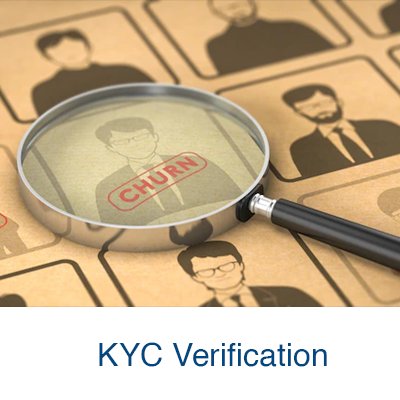The KYC Process and Its Importance!Posted by Love In Store Technologies on February 7th, 2024 Know Your Customer (KYC) is a critical factor in combating financial crime and money laundering today, and customer identification is the most important aspect as it is the first step to better performance in other stages of the process. Let's start with the definitions of KYC and eKYC and see how advanced identity verification systems can better support the KYC process. Have finished?
What is KYC? KYC is about knowing your customers and sometimes getting to know them. KYC, or KYC verification, is a mandatory process that identifies and verifies a customer's identity upon opening an account and periodically over time. This means that banks need to know who their customers are. Why is the KYC process important? The KYC procedure defined by the bank includes all the necessary steps to ensure customer confidence and to assess and monitor risks. The KYC process includes document verification such as identity verification, face verification, address verification, biometric verification, etc. Banks must comply with KYC and anti-money laundering regulations to limit fraud. Banks are responsible for KYC compliance. According to the United Nations, criminals launder between 1.6 trillion and 4 trillion dollars (2-5% of global GDP) every year. A stricter KYC/CDD process would help prevent this. KYC document This means companies must provide employees, board members, and shareholders with a copy of their social security number and passport when they open a new account. What is eKYC? Why is eKYC so popular in India? This is because 99.9% of Korea's adult population has a digital identity. By January 2023, 1.3 billion people have received Aadhaar numbers. eKYC also includes capturing information from I.D.s (OCR mode), extracting digital data from government-issued smart I.D.s (including chips) with physical presence, and using verified digital identities and facial recognition for online identity verification. Kyc collection has an online time. Why? COVID-19 has made customers and banks increasingly dependent on digital channels and applications. In the U.S. alone, 64% of first-time checking accounts were opened online in the second quarter of 2020, while 36% were opened in a branch. Additionally, as mobile usage increases, companies must focus on making mobile a priority and develop an onboarding experience that is fully mobile and easy to use. During identification (selfie), software usually provides life-detection capabilities to prevent spoofing attacks using still images. Biometric detection proves that a living person took the selfie taken. This type of KYC verification is also used in cryptocurrency trading applications. Result? Financial institutions can invest in digital panels, including video (video identification) video and video, and can adapt to consumers' preferences using biometrics through online and mobile channels. In Europe, the fourth program (AMLD4) entered into force in June 2017 through nine rules that contributed to the protection of financial institutions from the risk of washing and financing terrorism. The fifth high version of the AML guides (AMLD5) started a new challenge of efficient financial institutions in January 1020. Improve financial transactions for useful corporations to reduce the benefits and risk concepts of users of useful customers. Proper Customer Expertise (CDD) Manage your identity and share your data and data. KYC process flow
KYC policies are an essential framework for banks and financial institutions to identify their customers. Its origins lie in Title III of the Patriot Act of 2001, which provides various tools to prevent acts of terrorism. In order to comply with international money laundering rules and terrorist financing, you must implement customers in the first stage of business relationships when registering new customers. Banks usually use Kyc policy in the next four important elements: Consumer policy Customer identification procedures (List of data collection, identification, confirmation, politically unlocked person/sanctions), also the customer identification program (CIP) Like it? Share it!More by this author |



